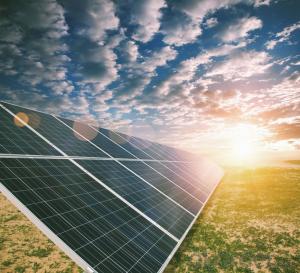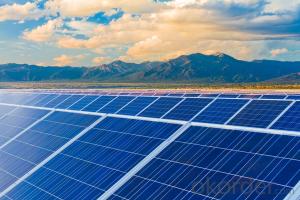CNBM Polycrystalline Silicon 315W Solar Module
- Loading Port:
- China main port
- Payment Terms:
- TT OR LC
- Min Order Qty:
- 100000 watt
- Supply Capability:
- 10000000 watt/month
OKorder Service Pledge
OKorder Financial Service
You Might Also Like
Item specifice
About CNBM
CNBM International Corp, established in 2004, is the business entity for trade and logistic of CNBM Group.With the advantages in Cement, Composite Materials, NewBuilding Materials and Engineering, CNBM mainly concentrate on coal, steel and construction equipments and give priority to solar and wind energy development.CNBMInternational is highly recognized by its business partners and clients all over the world and has established good business relationship with the customers in over 120 countries and regions all over the world.
The capacity of CNBMSOLAR is reach to 1GW, and make sure each year our shipment capacity is more than 700-800MWs, at the same time, we have set up the largest solar power station with our partner in Ukraine.
Standard Test Conditions of Polycrystalline Silicon Solar Panel
The opto-electrical specifications shown below are stabilized values being measured at Standard Test Conditions of multicrystalline silicon Solar Panel, Irradiance: 1000W/m2, Spectrum: AM1.5 at 25°C, The info below is subject to manufacturing tolerances. Where appropriate minutes of measurement are available and are used for the dimensioning of the installation.
Advantages of Polycrystalline Silicon Solar Panel
A&M Solar performance guarantees for 25 years
12 years guarantee for workmanship for multicrystalline silicon Solar Panel
Timeliness of delivery
Quality Products certified (TÜV, UL, CE, VDE, ISO)
Process is as follows:
1, the battery test
2, positive Welding - Inspection –
3, on the back of cascading - Inspection –
4, laying (glass cleaning, material cutting, glass pre-processing, laying) –
5, laminating –
6, to flash ( to the side, cleaning) –
7, fitted border (glue, loading angle keys, punching, install box, scrub I glue) –
8, the welding junction box –
9, high-pressure test –
10, component testing -- -
11 appearance inspection, packaging and storage;

FAQ:
1. How long will my inquiry get response?
Your inquiry related to our products or prices will be replied within 24 hours.
2. Can I get professional service and suggestion?
Well-trained and experienced staffs to answer all your questions in fluent English.
3. Do you accept OEM or customized design?
OEM & ODM, any your customized lightings we can help you to design and put into product.
4. What if I need specific design?
Distributorship are offered for your unique design and some our current models.
Data sheet
| Maximum power | 315W |
| Cell type(mm) | Polycrystalline solar cell 156*156 |
| Number of cell(pcs) | 72(6*12) |
| Manufacture site | China |
| Open-circuit voltage(voc) | 45.1V |
| Maximum power voltage(vmp) | 37.3V |
| Short-circuit current(isc) | 8.88A |
| Optimum operating current(imp) | 8.45A |
| Power tolerance | 0~+5W |
| Module efficiency | 16.2% |
| Dimensions(mm) | 1956*992*40 |
| Weight | 27 kg |
| Backsheet | Silver |
| Frame Colar | White |
| Frame | Anodized Aluminum Alloy |
- Q:Can solar panels be used in areas with high levels of heatwaves?
- Yes, solar panels can be used in areas with high levels of heatwaves. In fact, solar panels often perform better in hot temperatures as they rely on sunlight, not heat, to generate electricity. However, it is important to ensure proper installation and maintenance to mitigate any potential heat-related issues and optimize their performance in such conditions.
- Q:How can solar panels be integrated into building designs?
- Solar panels can be integrated into building designs in various ways, such as through rooftop installations, building-integrated photovoltaics (BIPV), solar facades, and solar windows. By incorporating solar panels into the design, buildings can generate renewable energy while minimizing the visual impact and maximizing energy efficiency.
- Q:Can solar panels be used for powering agricultural equipment?
- Yes, solar panels can be used to power agricultural equipment. Solar energy can be harnessed and converted into electricity, which can then be used to power various types of agricultural equipment such as irrigation systems, pumps, tractors, and other machinery. This sustainable and renewable energy source offers a cost-effective and environmentally friendly solution for powering agricultural operations.
- Q:Can solar panels be installed on a prison or correctional facility?
- Yes, solar panels can be installed on a prison or correctional facility. In fact, many correctional facilities have embraced solar energy as a way to reduce their carbon footprint and save on energy costs. Solar panels can be installed on rooftops, parking lots, or open areas within the facility, providing renewable and clean energy to power various operations within the prison. This not only helps in reducing greenhouse gas emissions but also allows prisons to become more self-sufficient and sustainable.
- Q:im trying to run my house with with solar panels, is it possible? if so please let me know how....i have a 6000 w inverter
- In my opinion you can do it. You will need to have solar panels. and batteries to store the power until needed.
- Q:Can solar panels be used for satellite communication?
- Yes, solar panels can be used for satellite communication. Solar panels are commonly used in satellites to generate electricity from sunlight, which is then used to power various communication systems on board. The panels convert sunlight into electrical energy, which is stored in batteries and used to power the satellite's communication equipment, including transmitters, receivers, and antennas. This allows satellites to communicate with ground stations and other satellites in space, enabling various applications such as weather monitoring, navigation, and telecommunications.
- Q:Hi! I bought a Coleman 2 vdc cooler that pulls 9 amps. What size solar panel and amp-hour battery do I need? I only open it 3 times a day. It will hold about 3 gals of milk.
- If it pulls 9 amps continuously, that's 08 watts/hour or about 2.5 kwh/day. If it only pulls half that (does it cycle?) it's about .2 kwh/day. You only want to drain a lead-acid battery 50% or so, so you'll want a 5 or 2.5 kwh battery pack. A typical setup for the 5 kwh would be two L-6 batteries in series, and for the 2.5 kwh you could use 2 T-05 batteries in series. This does not account for days of cloud. If you regularly have cloudy days, size the battery pack for two or three days of use with no input (2-3 x the sizes given above). To charge them, you typically want panels that will charge your battery at least 5% of its capacity per hour (C/20). For 2 volt nominal panels that's 0 amps for the T-05 or 20 amps for the L-6 batteries. It's good to have more than that for battery life (it cuts down on what's called stratification), so you'll want probably 50-200 watts of panels for the T-05 and 300-400 for the L-6. You'll also need a charge controller. Peltier coolers are very inefficient. You'll save money by using a regular mini-fridge and an inverter. Most mini-fridges only draw 50 watts or so, so you're talking 600 watt-hours for a 50% duty cycle. This means two T-05 batteries will give you two days of use and you'll only need 20-50 watts of panel. DK
- Q:Photosynthesis is fairly inefficient, but efficient enough to power all life on earth.
- Si is a neutral semiconductor, and, when combined with the other metals in the solar panel, it the panel polarizes, and releases electrons form one end, and accepts them back at the other. Like a water pump. Mg is not the major ingredient because it doesn't have the easily altered semiconductor properties Si does. To put it simply, Si is easier to work with.
- Q:Can solar panels be used for camping or outdoor activities?
- Yes, solar panels can be used for camping or outdoor activities. They are portable and can provide a sustainable source of energy to power various devices such as phones, lights, and even small appliances. Solar panels are lightweight, easy to set up, and can harness sunlight to charge batteries or directly power devices, making them an ideal solution for off-grid adventures.
- Q:What is the average size of a solar panel?
- The average size of a solar panel is typically around 65 inches by 39 inches, or approximately 5.4 feet by 3.25 feet. However, the actual size can vary depending on the manufacturer and the specific model of the solar panel.
1. Manufacturer Overview |
|
|---|---|
| Location | |
| Year Established | |
| Annual Output Value | |
| Main Markets | |
| Company Certifications | |
2. Manufacturer Certificates |
|
|---|---|
| a) Certification Name | |
| Range | |
| Reference | |
| Validity Period | |
3. Manufacturer Capability |
|
|---|---|
| a)Trade Capacity | |
| Nearest Port | |
| Export Percentage | |
| No.of Employees in Trade Department | |
| Language Spoken: | |
| b)Factory Information | |
| Factory Size: | |
| No. of Production Lines | |
| Contract Manufacturing | |
| Product Price Range | |
Send your message to us
CNBM Polycrystalline Silicon 315W Solar Module
- Loading Port:
- China main port
- Payment Terms:
- TT OR LC
- Min Order Qty:
- 100000 watt
- Supply Capability:
- 10000000 watt/month
OKorder Service Pledge
OKorder Financial Service
Similar products
New products
Hot products
Related keywords






























